It’s a rush job after all
Image: Ken Lund, Flickr (license)
Barely 10 months ahead of the start of the event, Pepsi asked WED Enterprises to pitch them on a campaign that would meet their high standards. Many Disney Imagineers believed that the situation was hopeless. They’d worked on some of the projects for as long as three years already. Why in the world would Pepsi think that they could do anything in less than a year?
Where others saw impossibility, Walt Disney saw opportunity. When Pepsi’s executives met him in California, he accepted the job without discussing it with his advisors. Returning to the office, he notified them of the “good news” about the World’s Fair. Now, they would be doing four pavilions, one of which they hadn’t even started yet! The difference between the Pepsi stage show and the others is that it would have many more constraints due to the timeframe. They would have to focus more on the themes and less on technological innovations like Omnimover tracks and AAs.
Walt Disney was a noted disciple of the philosophy that constraints are a huge benefit to the creative process. He felt that Pepsi’s pitch provided his Imagineers with a rare opportunity. They would have lowered expectations due to the time crunch. Were they to present something amazing, the headlines wouldn’t focus exclusively on the presentation itself. Each one would also note that not only did Disney succeed where others had failed, but they also did so with so little time that Pepsi had been ready to cancel their event. With disappointment expected, a Disney triumph would steal the show. And that’s exactly how history remembers the pavilion’s reception.
A little boat ride
Image: Sam Howzit, Flickr (license)
The one element of their attraction that Pepsi knew they wanted became the central tenet of Disney’s build. They pitched ideas based on the premise of the “happiest cruise that ever sailed.” If you hadn’t deduced the ride before this moment, you know it now. Yes, it was Pepsi that delivered an idea to WED Enterprises that became the basis for arguably their most world renowned attraction, It’s a Small World.
Uncle Walt quickly started thinking of the upcoming attraction as “a little boat ride.” Even his most devout disciples such as Rolly Crump were ready to mutiny over this turn of events. Crump later recounted his perception of the situation:
"”There's one more piece of real estate that they've offered to us. And I've got this idea for a little boat ride that maybe we can do.” And we thought, "A little boat ride???" I mean, God, we were working on Lincoln, the Carousel of Progress, both of which were using the highest technology and animatronic figures. And we were working on Ford, too. All of this and Walt wants to do a little boat ride!"
By 1963, however, Disney’s inner circle had grown used to the eccentricities of their boss. They knew from experience how difficult it would be to push him off an idea once he’d made up his made. Plus, he’d already signed the paperwork with Pepsi, so there was going to be a little boat ride no matter what.
A fast start
Image: StudioMONDO, Flickr (license)
Pepsi and Disney agreed to name the attraction “It’s a Small World – A Salute to UNICEF.” The basics of the attraction weren’t difficult. As a concession to the time constraint, WED Enterprises would create a modest track through which a series of boats would float. Their path would be finite and guided, providing Disney designers the opportunity to control the line of view at all points.
This premise became the core concept of many Disney attractions in the decades that followed, even if it wasn’t new and exclusive to the World’s Fair. After Disney finished their moving attractions there, they followed with The Haunted Mansion at Disneyland, which followed the same philosophy of controlled viewing perspective. Yes, there is something visible everywhere you look, but the ride design plans for you to focus your eye on a particular subject right in front of the moving vehicle.
In the case of It’s a Small World, that subject is a doll. Well, lots of them. Disney himself conceptualized the details of the attraction after Pepsi pitched its idea. The moment they discussed a boat ride featuring children of the world, he knew what he intended to do. There was even a bit of serendipity regarding Pepsi’s vision.
Unbeknownst to the beverage manufacturers, Disney builders were already toying with boat ride specs. They’d had conversations with Arrow Manufacturing, a noted construction company in Mountain View, California. The two parties had discussed the topic of a functional boat system on tracks. Bob Gurr, an Imagineer who later became Director of Special Vehicle Development at Disney, had designed some of the specs himself. Without ever planning for It’s a Small World, Disney suddenly had the ride mechanics and the display design fall into their lap. And all these events transpired within the first month of their joining the project.
Excitedly, Disney executives headed to New York City to show their amazing work to Pepsi’s board. A hilarious historical footnote is that most of the board members disliked the concept of It’s a Small World and were still ready to cancel the entire pavilion. Once again, Joan Crawford saved the day. She stood up and loudly proclaimed, “We are going to do this!” At this point, everyone consented. She was already a terrifying person, and that was before the world knew about this part of her life.
Doll parts
Image: Sam Howzit, Flickr (license)
All Disney needed to build It’s a Small World in time was to create believable inhabitants of a global society. Realizing that children would influence the decisions of which attractions their parents should visit, the Imagineering team skewed very young with their visuals. They settled on playful caricatures of the world’s most famous landmarks. They recreated the Taj Mahal and Eiffel Tower in tiny sizes and with splashy colors to draw the attention of kids while also stimulating their imagination.
Uncle Walt brought onboard two of his most trusted female advisors to oversee the design. Alice Davis, whose husband Marc is one of the Nine Old Men, joined the project. Then, Mary Blair, who had already proven herself as an artist, was added. As one of Disney’s favorite illustrators, he hoped that the two women could make lifelike dolls that wouldn’t be creepy. The jury’s still out on whether she succeeded. Davis handled the doll costumes, and Blair was in charge of graphics. Disney Legend Claude Coats earned the final task of overall attraction layout. You have him to thank for the seemingly eternal length of It’s a Small World.
Once Disney finalized It’s a Small World, its employees felt that they had done the impossible. In his own words, Walt Disney stated: “When we completed "It's a Small World" for presentation at the New York World's Fair, we felt that we had accomplished what we'd set out to do. We wanted to foster a better understanding among the nations of the world by showing the dress, the customs, the language, the music, and a little of the culture of our neighbors around the world… And I think it's safe to say that having fun has universal appeal.”
The big show
Image: France 1978, Flickr (license)
With all their presentations completed, all that remained for Disney employees was to bask in the afterglow of their many triumphs. Out of the 140+ pavilions at the 1964 World’s Fair, Disney Imagineers crafted four of the five most popular ones (the other being the General Motors Futurama exhibit). In the process, Walt Disney cemented his legacy as one of the most impressive innovators in history. Once again, he started a project from nothing and built it into something that made the world’s population marvel in awe.
Of course, his accomplishments during the World’s Fair reached far beyond technological achievement. His performance during the run-up to the event should be studied in Master’s classes in business. By selling the services of his Imagineers and himself for seven-figure sums, he persuaded other people to pay for the construction of rides for which they would have no use at the end of the event. Once the World’s Fair was over, Disney generously offered to mitigate the balance of fees for his company’s services.
All that Pepsi-Cola, General Electric, and the state of Illinois had to do to reduce their outstanding accounts balances was transfer the World’s Fair attractions back to Disneyland. All the expenses they incurred during the shipping process would subtract from their WED Enterprises bill. In other words, Walt Disney convinced several different companies and one state government to finance attractions that wound up becoming linchpins of Disneyland and, later, Walt Disney World. And THEY PAID HIM for the honor.
Theoretically, these organizations all received the glory that came from having one of the five most popular attractions at the 1964 World’s Fair. The problem with that line of thinking is that everybody remembers all those exhibits for their Disney influence more than for that of the sponsor, which is particularly brutal for Pepsi-Cola. They were the ones that generated the underlying concept for It’s a Small World, which wound up as a signature attraction at every Disney theme park across the globe. Yes, if that infernal song has ever gotten stuck in your head for days on end, it’s Pepsi’s fault first and foremost. If that doesn’t make you a Coke drinker for life, I don’t know what will.
The legacy of the 1964 World’s Fair is that it crystallized that magical time during the Space Age. The world was brimming with optimism for a better tomorrow, and Disney’s Imagineers somehow encapsulated the feelings of society through four vastly different but equally amazing attractions.
To this day, the company embraces that perception. Their 2015 movie, Tomorrowland, actually begins at the 1964 World’s Fair. George Clooney’s character takes a ride on It’s a Small World, which teleports him to a future only Uncle Walt himself could have imagined. This respectful tribute reinforces the belief that out of the many achievements of Walt Disney, none was more impressive than this series of events. Somehow, he convinced corporate America to pay him to steal the show right out from under them at the most memorable World’s Fair in history. Then, he made them pay to transfer the attractions back to his theme park where they’ve remained in operation for over 50 years now.
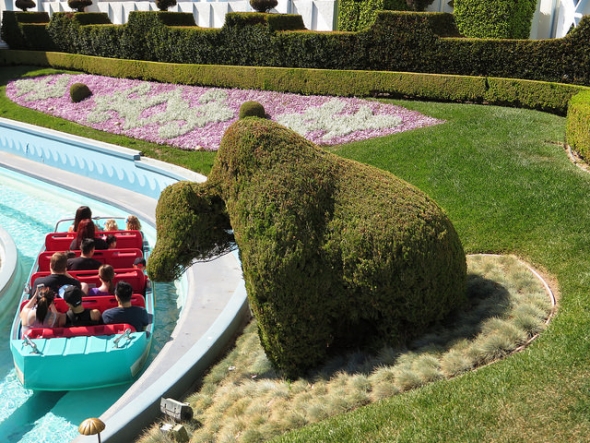
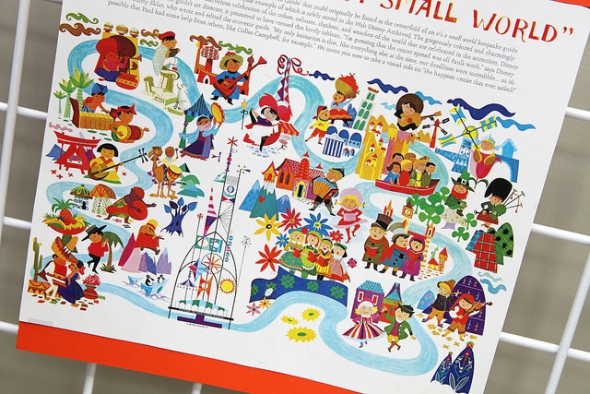
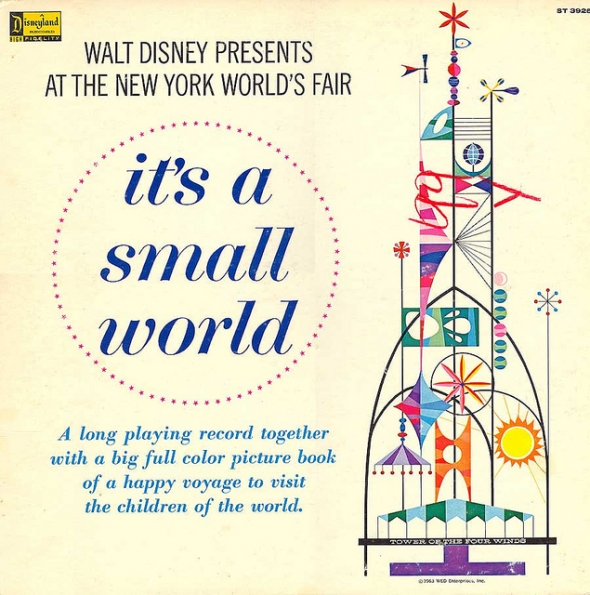
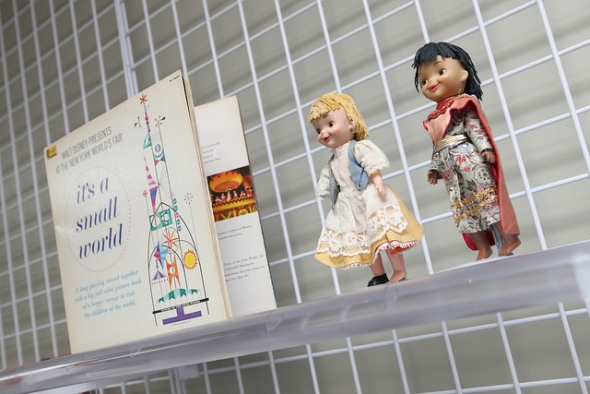
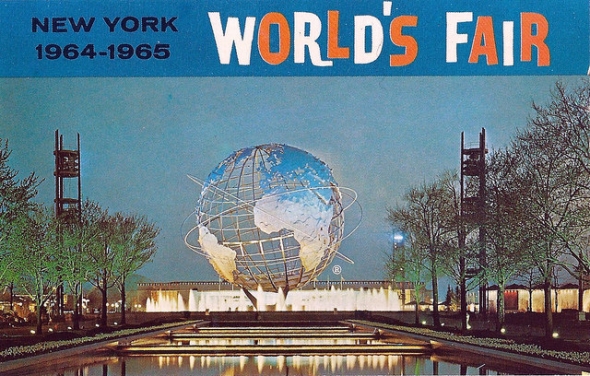

Comments
I love this story, along worn many others on this site. I am only a little bothered that small world is treated as annoying. The world in a childlike state of peace an bliss is an amazing dream. What could be a better signature experience for Disney?
Excellent piece. Thank you.